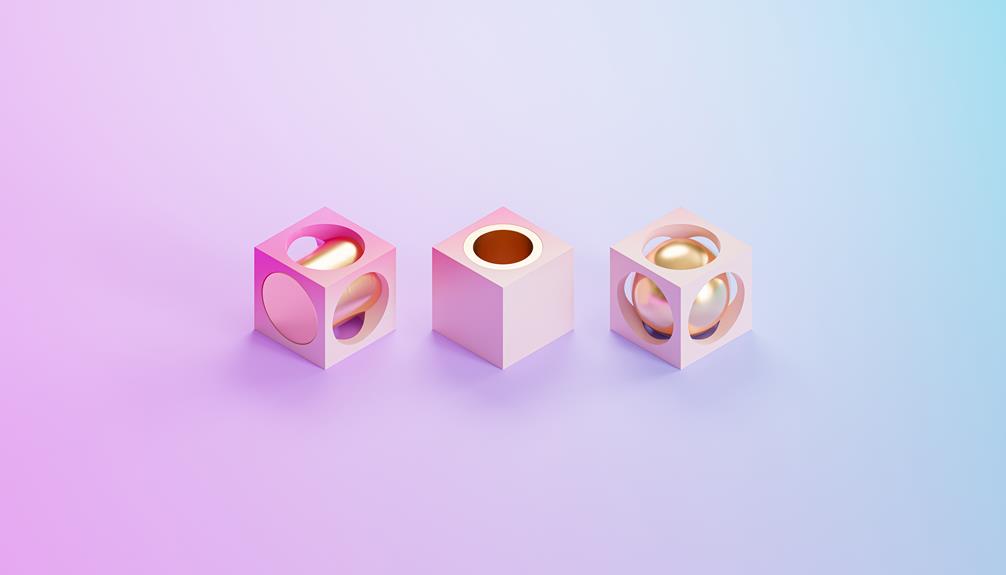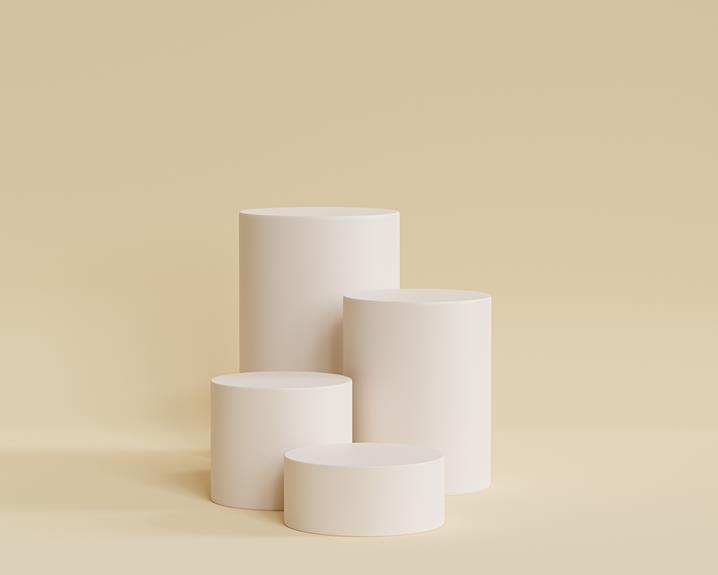Metal 3D Printing: Advances and Applications in Manufacturing
In the realm of manufacturing, metal 3D printing has emerged as a powerful tool, akin to a skilled artisan crafting intricate sculptures with precision and finesse. This cutting-edge technology has revolutionized the industry, enabling the creation of complex geometries and customizable designs previously unattainable.
With its cost-effectiveness and a myriad of industrial applications, metal 3D printing offers liberation from traditional manufacturing constraints.
Join us as we explore the advances and applications of this incredible technique in our article on Metal 3D Printing.
Key Takeaways
- Metal 3D printing enables the creation of complex geometries and customizable designs.
- Recent advancements in metal 3D printing have expanded the range of materials that can be used, including aluminum, copper, and exotic alloys.
- Integration of artificial intelligence (AI) and machine learning optimizes the printing process and improves efficiency.
- Metal 3D printing finds applications in automotive part production, aerospace component manufacturing, and medical device fabrication.
Latest Innovations in Metal 3D Printing
As technology continues to evolve, new advancements in metal 3D printing have emerged, allowing for greater precision and efficiency in the manufacturing process. Metal 3D printing, also known as additive manufacturing, has revolutionized the production of complex metal parts, enabling designers and engineers to create intricate geometries with ease.
One of the key advancements in metal 3D printing is the use of advanced materials. Traditionally, metal 3D printing was limited to a few select metals such as stainless steel and titanium. However, recent developments have expanded the range of materials that can be used in metal 3D printing, including aluminum, copper, and even exotic alloys. This has opened up new possibilities for industries such as aerospace, automotive, and healthcare, where lightweight and high-strength components are in demand.
Another area of innovation in metal 3D printing is the integration of artificial intelligence (AI) and machine learning. These technologies can optimize the printing process by analyzing data from previous prints and making adjustments in real-time. AI algorithms can also predict potential defects or failures in the printing process, enabling proactive measures to be taken to prevent them. This not only improves the quality of the final product but also enhances the overall efficiency of the manufacturing process.
Industrial Applications of Metal 3D Printing
Metal 3D printing has emerged as a game-changer in the industrial sector, finding applications in automotive part production, aerospace component manufacturing, and medical device fabrication.
Automotive manufacturers are utilizing metal 3D printing to produce lightweight, complex parts with improved performance and reduced material waste.
In the aerospace industry, metal 3D printing enables the production of intricate, lightweight components that can withstand extreme conditions.
Additionally, medical device manufacturers are leveraging metal 3D printing to create customized implants and prosthetics with enhanced functionality and patient-specific designs.
Automotive Part Production
The automotive industry has witnessed a significant increase in the utilization of metal 3D printing for the production of various parts and components. This technology offers numerous advantages such as design freedom, reduced lead times, and cost savings. One of the key applications of metal 3D printing in automotive part production is the manufacturing of complex geometries that cannot be easily achieved through traditional manufacturing methods. By leveraging the capabilities of metal 3D printing, automakers can produce lightweight components with intricate designs, improving overall vehicle performance and fuel efficiency. Moreover, 3D printing allows for the production of customized parts on-demand, reducing inventory costs and enabling faster product iteration cycles. The following table showcases some of the automotive parts that can be successfully manufactured using metal 3D printing technology.
| Automotive Parts | Benefits of Metal 3D Printing |
|---|---|
| Engine components | Improved performance |
| Exhaust systems | Weight reduction |
| Brackets | Design flexibility |
| Heat exchangers | Customization |
| Suspension components | Enhanced durability |
As metal 3D printing continues to advance, it is expected to revolutionize the automotive industry by enabling the production of complex and lightweight parts, leading to more efficient vehicles and enhanced driving experiences. Furthermore, this technology has the potential to redefine supply chains and manufacturing processes, making the automotive industry more agile and adaptable to changing market demands. The successful utilization of metal 3D printing in automotive part production sets the stage for exploring its applications in other sectors, such as aerospace component manufacturing.
Aerospace Component Manufacturing
With the ability to produce complex and lightweight components, metal 3D printing has emerged as a game-changing technology in the aerospace industry. The aerospace sector demands high-performance materials and intricate designs to meet the strict safety and efficiency standards.
Metal 3D printing allows for the fabrication of components with intricate geometries, such as turbine blades, fuel nozzles, and structural brackets, which were previously challenging to manufacture using traditional methods. This technology enables the production of lightweight components, reducing the overall weight of the aircraft and improving fuel efficiency.
Furthermore, metal 3D printing enables the integration of multiple parts into a single component, reducing assembly time and improving overall structural integrity.
As we transition to discussing medical device fabrication, the application of metal 3D printing in aerospace paves the way for similar advancements in the healthcare industry.
Medical Device Fabrication
Utilizing advanced metal 3D printing technology, medical device fabrication has seen remarkable progress and offers a plethora of opportunities for enhancing patient care and treatment outcomes.
With the ability to create complex geometries and customize designs, metal 3D printing enables the production of patient-specific medical devices such as implants, prosthetics, and surgical instruments.
This technology allows for the precise fabrication of devices that perfectly fit the patient's anatomy, resulting in improved functionality and comfort.
Additionally, metal 3D printing enables the production of lightweight yet durable devices, reducing the risk of complications and enhancing patient mobility.
Furthermore, the ability to produce devices with intricate internal features, such as porous structures for enhanced osseointegration, opens up new possibilities for improving treatment outcomes.
The advancements in metal 3D printing have the potential to revolutionize medical device fabrication and significantly impact the field of healthcare.
Advantages of Metal 3D Printing in Manufacturing
Metal 3D printing offers several advantages in manufacturing.
One advantage is cost-effective production methods. Manufacturers can reduce costs by eliminating the need for expensive tooling and reducing material waste.
Another advantage is complex design capabilities. The ability to create intricate and complex designs that are difficult or impossible to achieve with traditional manufacturing methods opens up new possibilities for product innovation and customization.
Cost-Effective Production Methods
Through the integration of innovative manufacturing technologies, companies can significantly reduce costs and improve production efficiency in metal 3D printing. This is achieved by eliminating the need for traditional manufacturing processes such as casting or machining, which can be time-consuming and expensive.
With metal 3D printing, parts can be produced directly from a digital model, eliminating the need for tooling and reducing material waste. Additionally, the ability to print complex geometries and hollow structures allows for lightweight designs, further reducing material usage and costs.
Furthermore, the flexibility of metal 3D printing enables the production of customized parts on-demand, eliminating the need for large inventories. These cost-effective production methods make metal 3D printing an attractive option for manufacturers looking to streamline their processes and reduce overall expenses.
This cost-effective production method also offers advantages in terms of complex design capabilities.
Complex Design Capabilities
With the integration of advanced software and precise control of the printing process, manufacturers can achieve intricate and complex designs in metal 3D printing for enhanced functionality and performance. Metal 3D printing allows for the creation of intricate geometries that would be difficult or impossible to achieve using traditional manufacturing methods. This capability opens up new possibilities for product design and innovation.
Complex internal structures, lightweight lattice frameworks, and optimized shapes can be easily incorporated into metal components, leading to improved performance and reduced weight. Additionally, metal 3D printing enables the creation of customized parts with unique shapes and features, allowing for personalized and tailored solutions. These complex design capabilities not only enhance the performance of the final product but also offer greater design freedom and flexibility.
Now, let us delve into the next section, discussing the cost-effectiveness of metal 3D printing.
Cost-Effectiveness of Metal 3D Printing
The cost-effectiveness of metal 3D printing is a crucial aspect to consider in the manufacturing industry. While metal 3D printing offers numerous advantages such as increased design flexibility and reduced lead time, it is important to assess its economic feasibility to determine whether it is a viable option for large-scale production.
One of the main factors influencing the cost-effectiveness of metal 3D printing is the initial investment required for the equipment and materials. Metal 3D printers are generally more expensive compared to traditional manufacturing equipment, and the cost of metal powders used in the process can also be significant. However, as the technology continues to advance and become more widespread, the initial costs are expected to decrease, making it more accessible to a wider range of industries.
Another consideration is the cost of post-processing and finishing. Metal 3D printed parts often require additional steps such as heat treatment, machining, or surface finishing to achieve the desired quality and performance. These post-processing steps can add to the overall cost and time required for production.
However, it is important to note that metal 3D printing offers significant cost savings in certain applications. For complex geometries or low-volume production, where traditional manufacturing methods would be expensive or impractical, metal 3D printing can provide a more cost-effective solution. Additionally, the ability to consolidate multiple parts into a single component can reduce material waste and assembly costs.
Complex Geometries Achievable With Metal 3D Printing
Metal 3D printing enables the production of intricate and complex geometric designs that were previously difficult or impossible to achieve with traditional manufacturing methods. This revolutionary technology has opened up new possibilities in various industries, allowing engineers and designers to create parts and products with unprecedented complexity and functionality.
The ability to create complex geometries with metal 3D printing has numerous benefits, including:
- Design Freedom: Metal 3D printing eliminates many of the design constraints imposed by traditional manufacturing processes. It enables the production of parts with intricate internal features, complex lattice structures, and optimized geometries that improve performance and functionality.
- Lightweighting: With metal 3D printing, it is possible to remove excess material and create lightweight structures without compromising strength or integrity. This is particularly beneficial in aerospace and automotive industries, where reducing weight can improve fuel efficiency and overall performance.
- Customization: Metal 3D printing allows for the customization of parts and products on an individual level. This level of personalization opens up new possibilities in various applications, such as medical implants tailored to a patient's unique anatomy or customized jewelry designs.
Customization Opportunities With Metal 3D Printing
One of the significant advancements brought about by metal 3D printing is the unprecedented opportunity for customization in manufacturing. Unlike traditional manufacturing methods, metal 3D printing allows for the creation of highly complex and intricate designs that were previously unattainable. This capability opens up a world of possibilities for customization, enabling manufacturers to create products that are tailored to meet the specific needs and preferences of individual customers.
With metal 3D printing, manufacturers can easily modify the design of a product to incorporate personalized features or adaptations. This level of customization extends beyond aesthetics, as it can also include functional enhancements that improve the performance or usability of a product. For example, in the medical field, metal 3D printing enables the production of patient-specific implants that perfectly match the anatomical structure of an individual, leading to better surgical outcomes.
Furthermore, metal 3D printing allows for the production of one-off or low-volume parts with minimal setup costs and lead times. This means that manufacturers can economically produce small batches of customized products, eliminating the need for costly tooling and molds. This level of flexibility and agility in manufacturing is particularly advantageous in industries where personalized products or prototypes are in high demand.
Frequently Asked Questions
What Are the Limitations of Metal 3D Printing in Terms of Material Options?
Limitations of metal 3D printing in terms of material options include the availability of suitable metal powders, limited range of printable alloys, challenges in achieving desired material properties, and high costs associated with specialized materials.
Can Metal 3D Printing Be Used for Large-Scale Manufacturing?
Yes, metal 3D printing can be utilized for large-scale manufacturing. Its ability to create complex geometries, reduce material waste, and enhance design flexibility makes it a viable option for industries seeking efficient and cost-effective production methods.
Are There Any Safety Concerns Associated With Metal 3D Printing?
Safety concerns associated with metal 3D printing include potential hazards from the use of high-powered lasers, exposure to metal powders, and the risk of thermal and chemical reactions. Proper safety measures, such as ventilation and protective equipment, should be implemented to mitigate these risks.
What Post-Processing Steps Are Typically Required After Metal 3D Printing?
After metal 3D printing, several post-processing steps are typically required to achieve the desired final product. These steps may include removal of support structures, heat treatment, surface finishing, and inspection to ensure quality and accuracy.
How Does the Quality of Metal 3D Printed Parts Compare to Traditionally Manufactured Parts?
The quality of metal 3D printed parts can vary depending on factors such as the material used, printing parameters, and post-processing techniques. In some cases, the quality can be comparable to traditionally manufactured parts, but further research and development is needed to fully understand and optimize the capabilities of metal 3D printing.
Conclusion
In conclusion, metal 3D printing has emerged as a groundbreaking technology with significant advancements and numerous applications in manufacturing. Its ability to create complex geometries and offer customization opportunities has revolutionized the industry.
Furthermore, the cost-effectiveness of metal 3D printing makes it an attractive option for various industrial sectors. With its continued innovation and development, metal 3D printing is poised to reshape the manufacturing landscape, symbolizing a new era of efficiency and flexibility.









